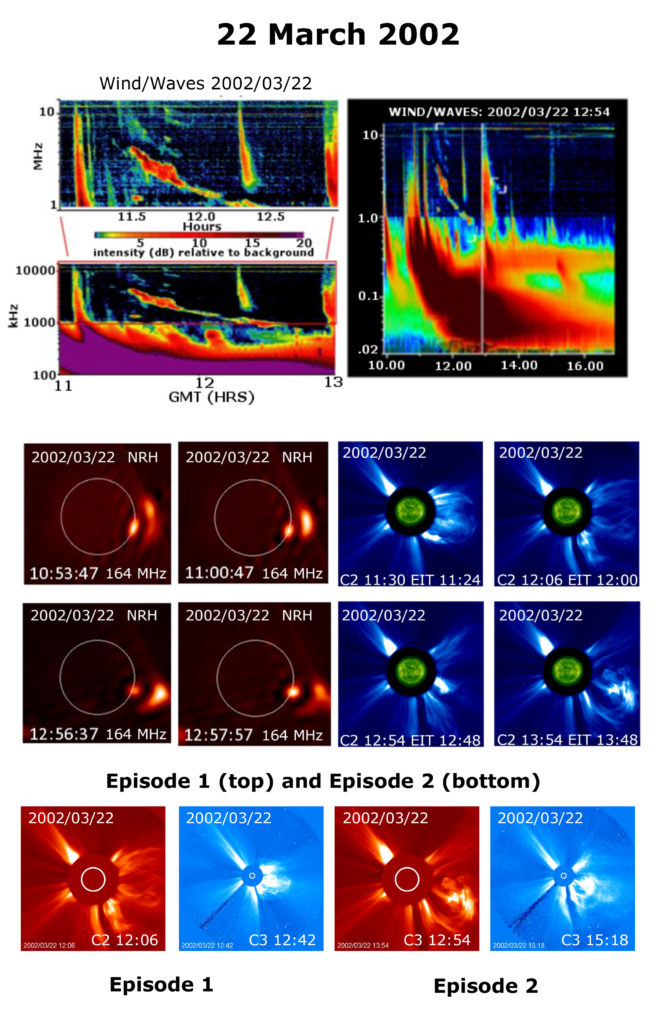22 March 2002 (SS06, -100) MC CMEH10-CMEH11
22 March Episode 1 10:30-11:30 UT: Microwave burst (A) observed by Ondrejov (single frequency at 3 GHz and spectrum in the frequency range 2-4.5 GHz) and at lower frequencies (B) by the NRH (432 MHz and 164 MHz). The burst onset coincides with that of a type III burst group which is followed at 11:05 UT by a type II burst also observed first by the NRH and the DAM, then by WIND/Waves (11:30-12:40 UT, 14000-500 kHz, exhibiting several branches). This event is associated with CMEh10 (Halo 10:06 V 1750, 1685, 1662 km −1 ).
Episode 2 This type II burst disappears abruptly at 12:45 UT, except for one of its lanes which also disappears soon after. This disappearance: a) coincides with the onset of a burst of short duration well detected by the DAM (80-30 MHz) and WIND/Waves, then followed by a type II burst of short duration, detected by WIND/Waves (single tone 14000-500 kHz, 13:10-13:35 UT) and by a continuum detected by WIND/Waves; b) at this time, another CME (CMEh11 12:30:06 P 243, W 120, V 875, 1027, 937 km s−1) appears in the same region and below CMEh11. These observations suggest that the disappearance of the first type II burst, followed by the onset of a new one, results from the interaction of the two CMEs. In addition: a) the speed of the second CME increases with its altitude and has an orientation (Position angle 249°), which is distinct from that of the first one, CMEh11 (Position angle259°) whose speed conversely decreases; b) the positions of the radio sources are also distinct, one of them being located in the south, at approximately -1.5 S 1.8 W (time interval 12:55-13:00 UT).
This event shares the following characteristics:
- Episode 1 A-B (Type IV), Type II1.
- Episode2: Type II2, Interaction of two CMEs.

